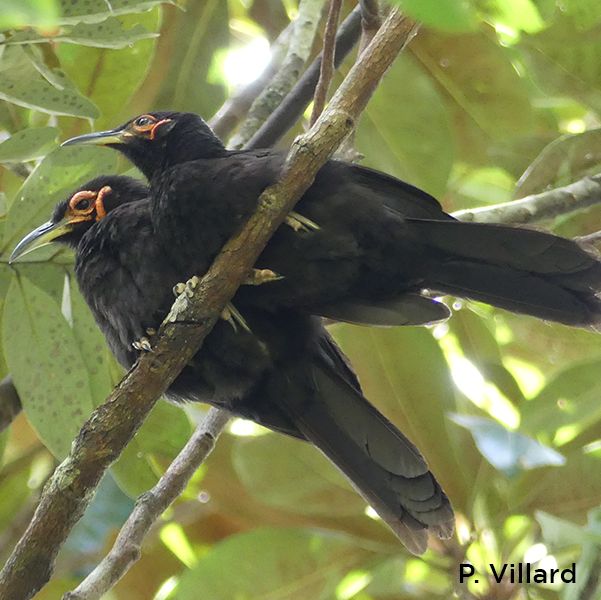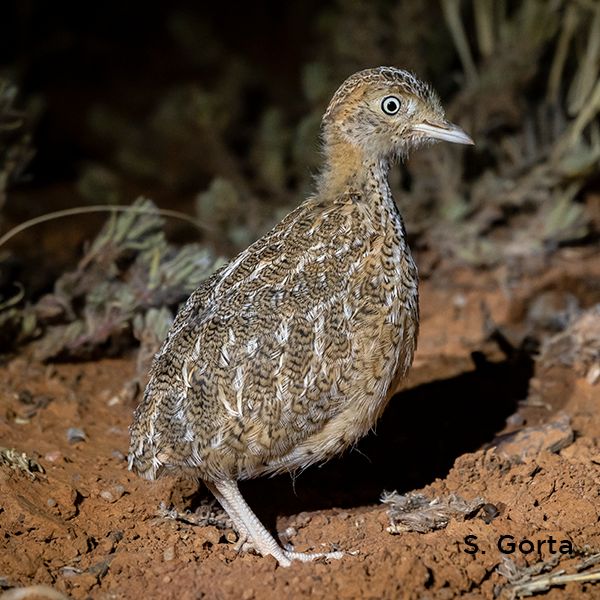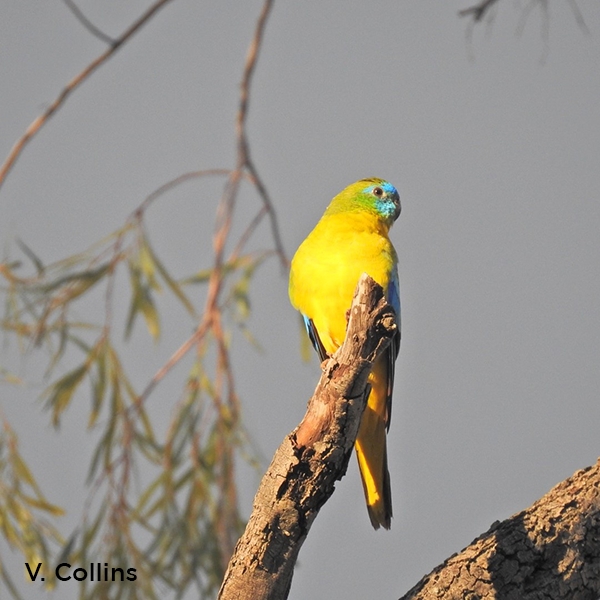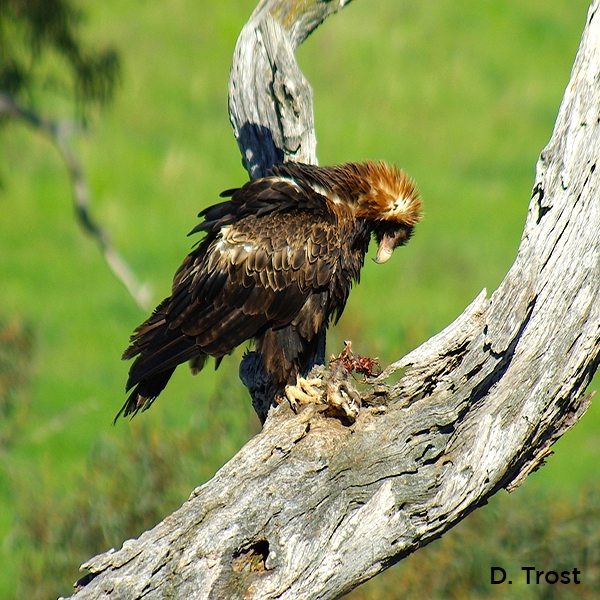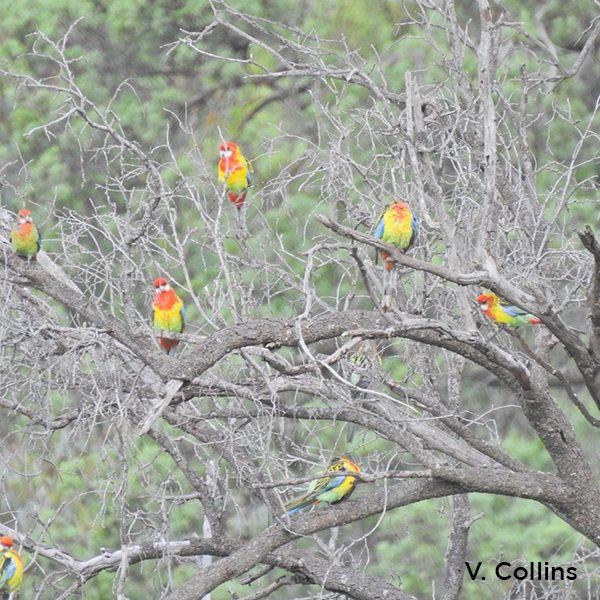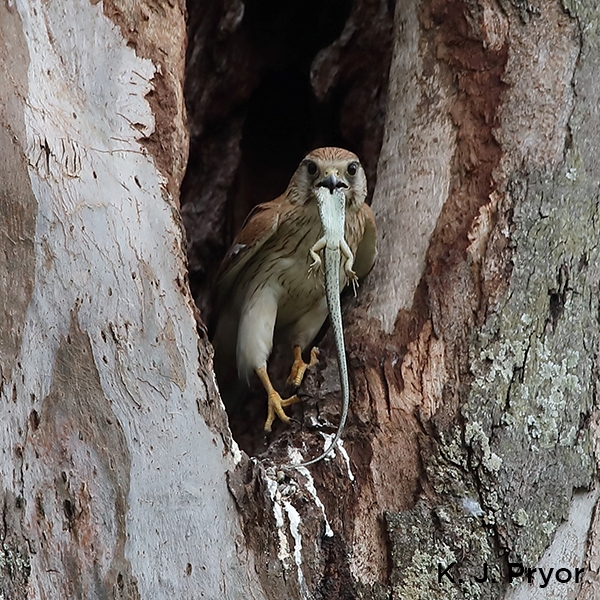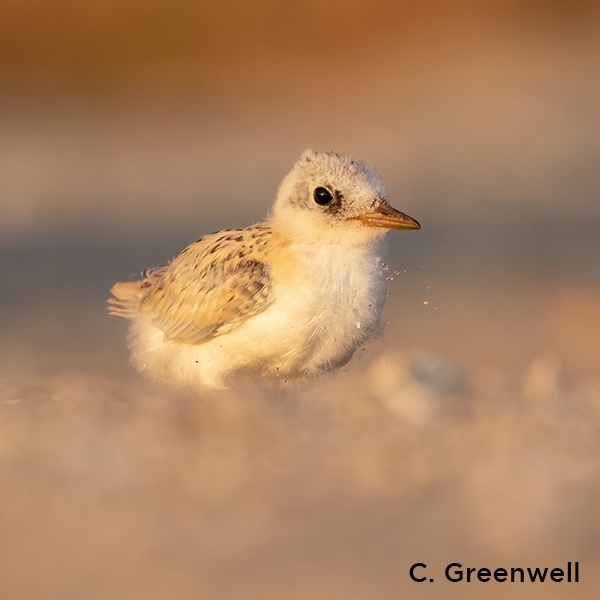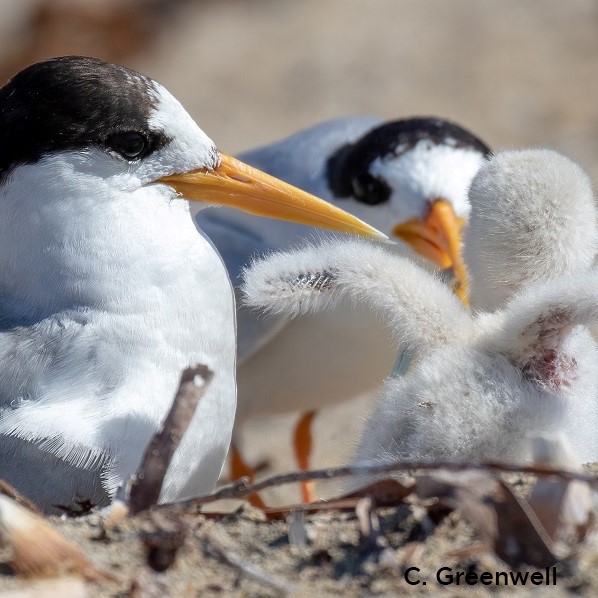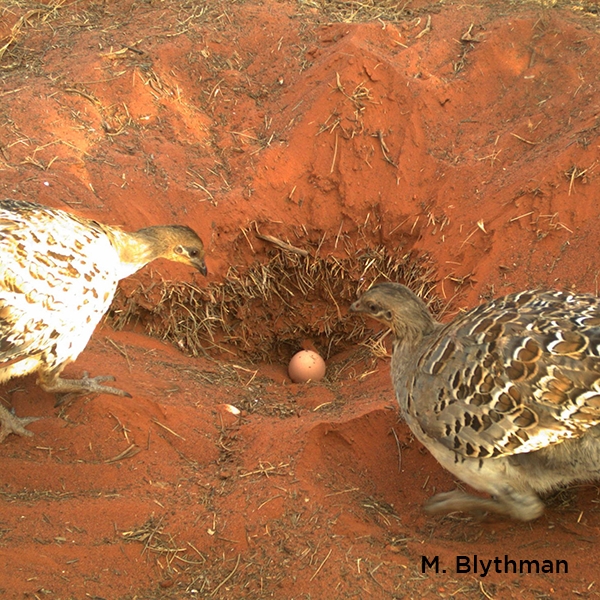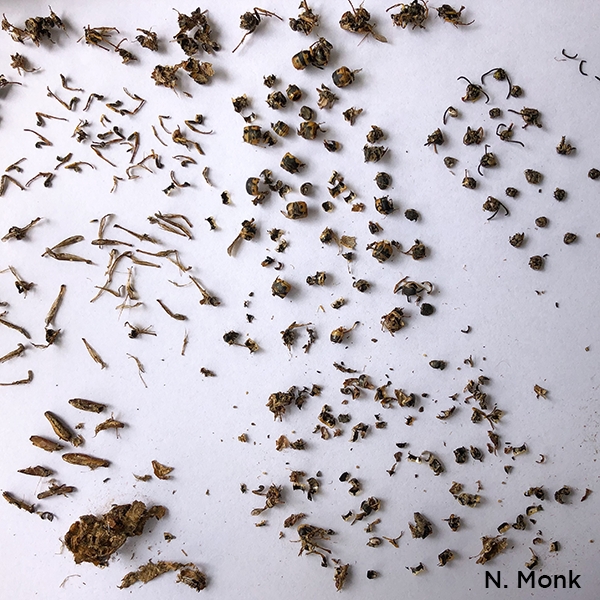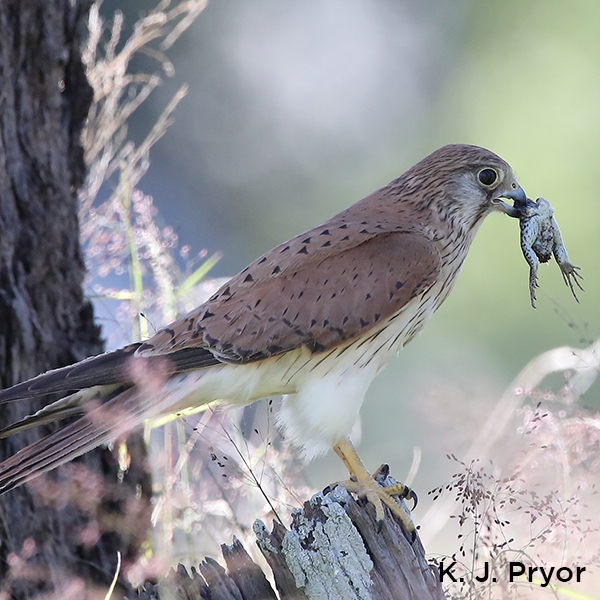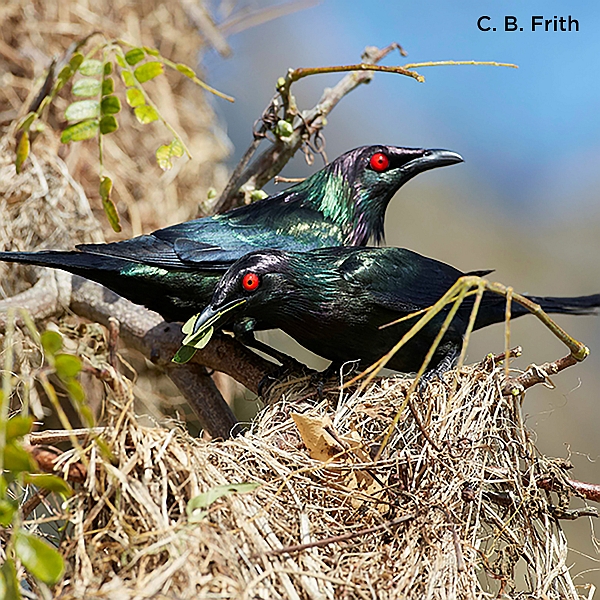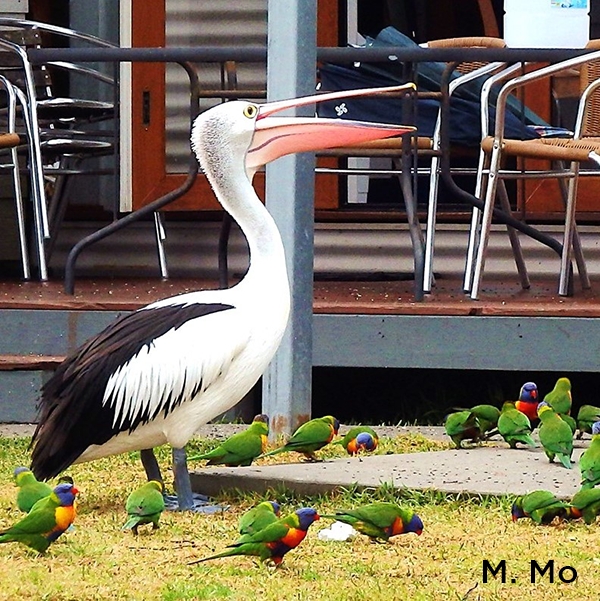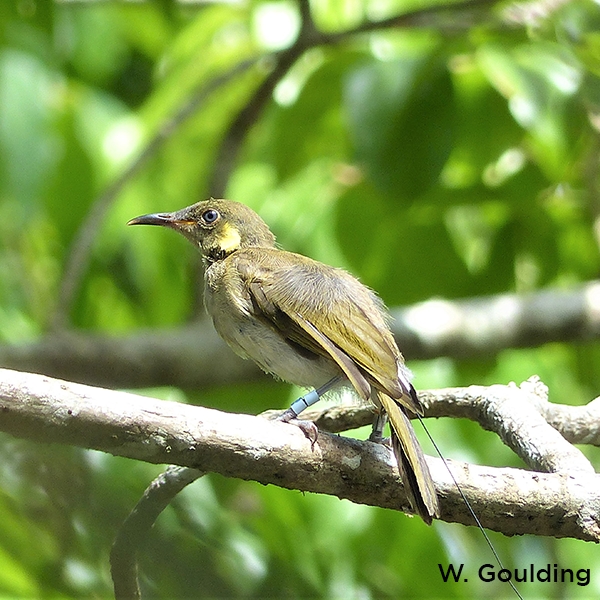Breeding biology and vocalisations of the Blue-grey Robin Peneothello cyanus and its reproductive traits compared with those of other montane New Guinean robins
Richard H. Donaghey, Donna J. Belder, Tony Baylis
Abstract
We monitored a nest of the Blue-grey Robin Peneothello cyanus (Petroicidae) while in the Yopno Urawa Som Conservation Area, Huon Peninsula, Papua New Guinea, from 23 October to 6 December 2014. The nest was watched for 24 hours during incubation of the single egg, and for 25.9 hours during the first 11 days of the nestling period. Vocalisations were recorded. Female daylight incubation constancy was 68%, the mean duration of on-bouts was 5.05 minutes and of offbouts was 2.32 minutes. The daily number of incubation bouts was 98, and the mean number of incubation bouts per hour was 8.2. Feeding of the female by the male during incubation occurred at and away from the nest. Mean brooding constancy by the female was 51.4% and mean number of brooding bouts per hour 8.9. Mean number of food-delivery trips by the male and female combined was 4.4 per hour, and the mean number of their nest visits was 12.7 per hour. The fate of the nestling was unknown but the high number of incubation bouts and nest visits during the first 11 days of the nestling period suggests that the risk of nest predation was low. At 10 days of age, a nestling weighed 18 g (72% of mean adult weight). The reproductive traits of the Blue-grey Robin are compared with those of three other montane New Guinean robin species. Male Blue-grey Robins had a repertoire of seven song types near the nest, females sang five song types at the nest, and two song types were sung by both the male and the female.

